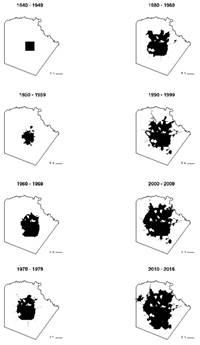Municipal Annexation as a Mechanism for Suburban Expansion in San Antonio, Texas 1939-2014

This paper examines the history of municipal annexation as a mechanism for suburban expansion in San Antonio, Texas between 1939 and 2014. During the period under study, the city council executed 461 annexations and boundary adjustments, adding 497 square miles to the metropolitan footprint. The same time frame saw San Antonio grow to become the seventh most populous city in the United States.
The continued use of municipal annexation as a way to grow the city has generated a wide array of responses among citizenry, ranging from strong support within development communities eager to access emerging markets, to opposition from historically disenfranchised neighborhoods where people contend that annexation further consolidates resources in middle- and upper-income areas of the city. This paper examines the historical roots of such positions in an attempt to clarify today’s contentious discourse on annexation in San Antonio.
keywords: Municipal Annexation, Metropolitan Expansion, Metropolitan Fragmentation, Suburbanization


Add comment
Log in to post comments